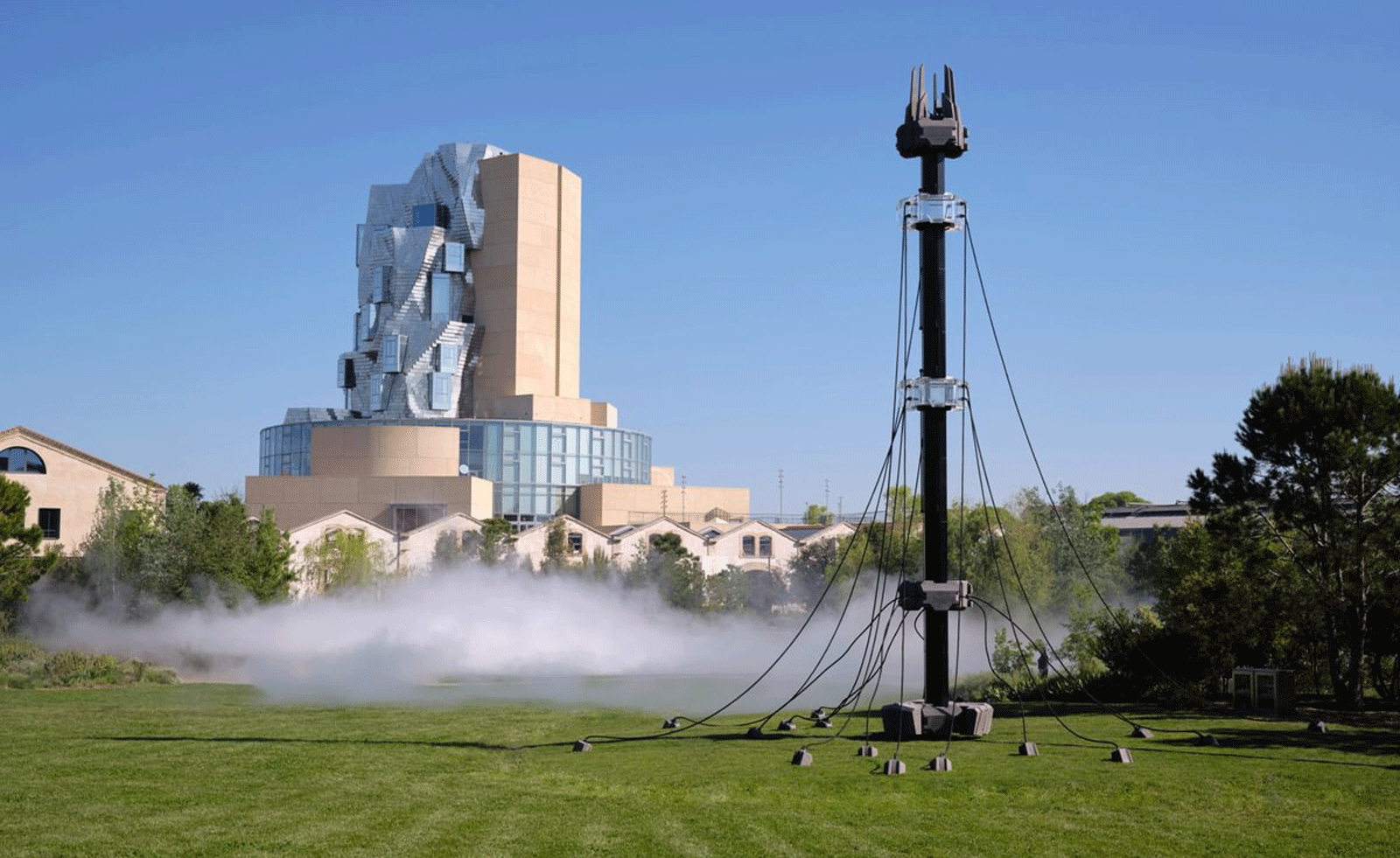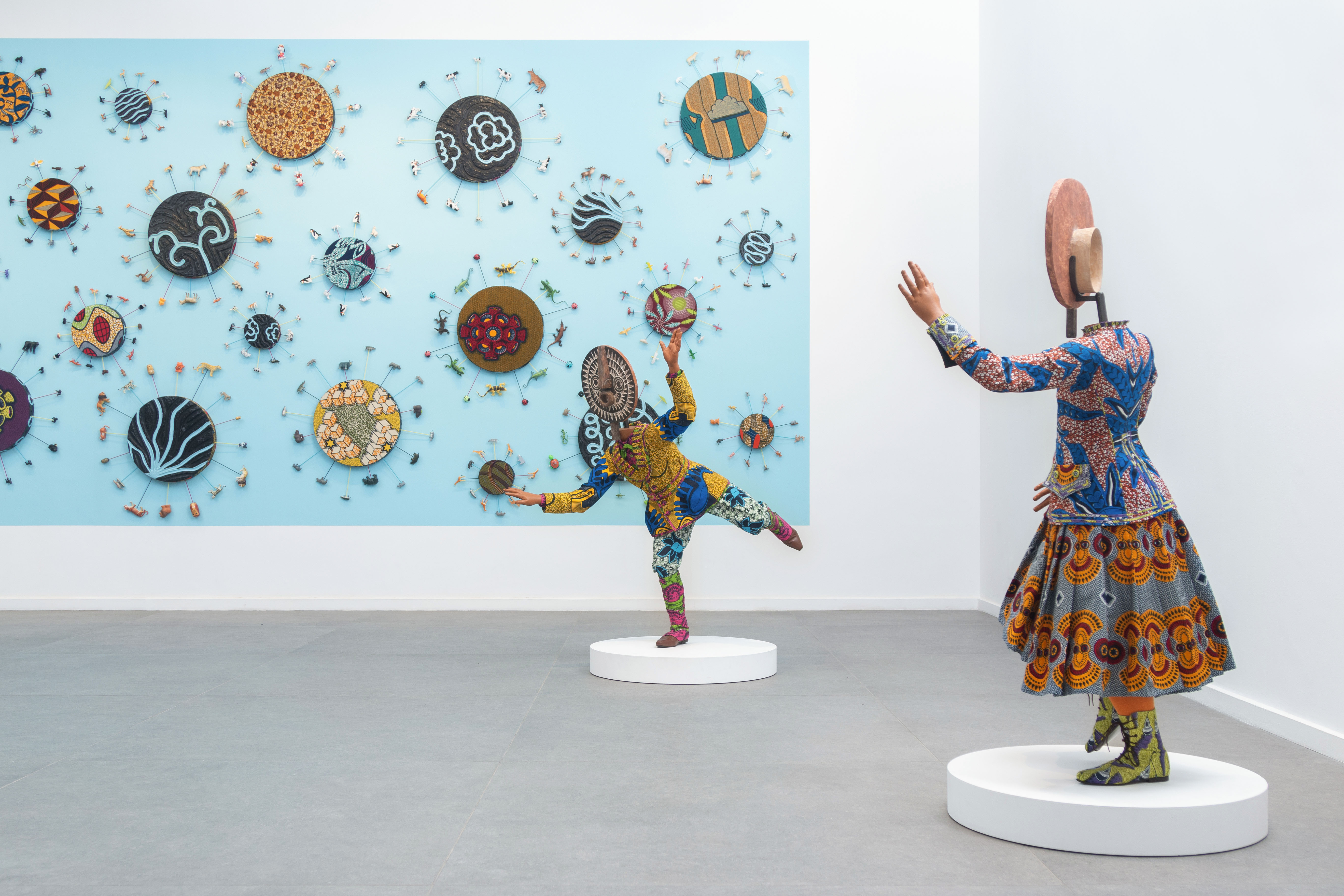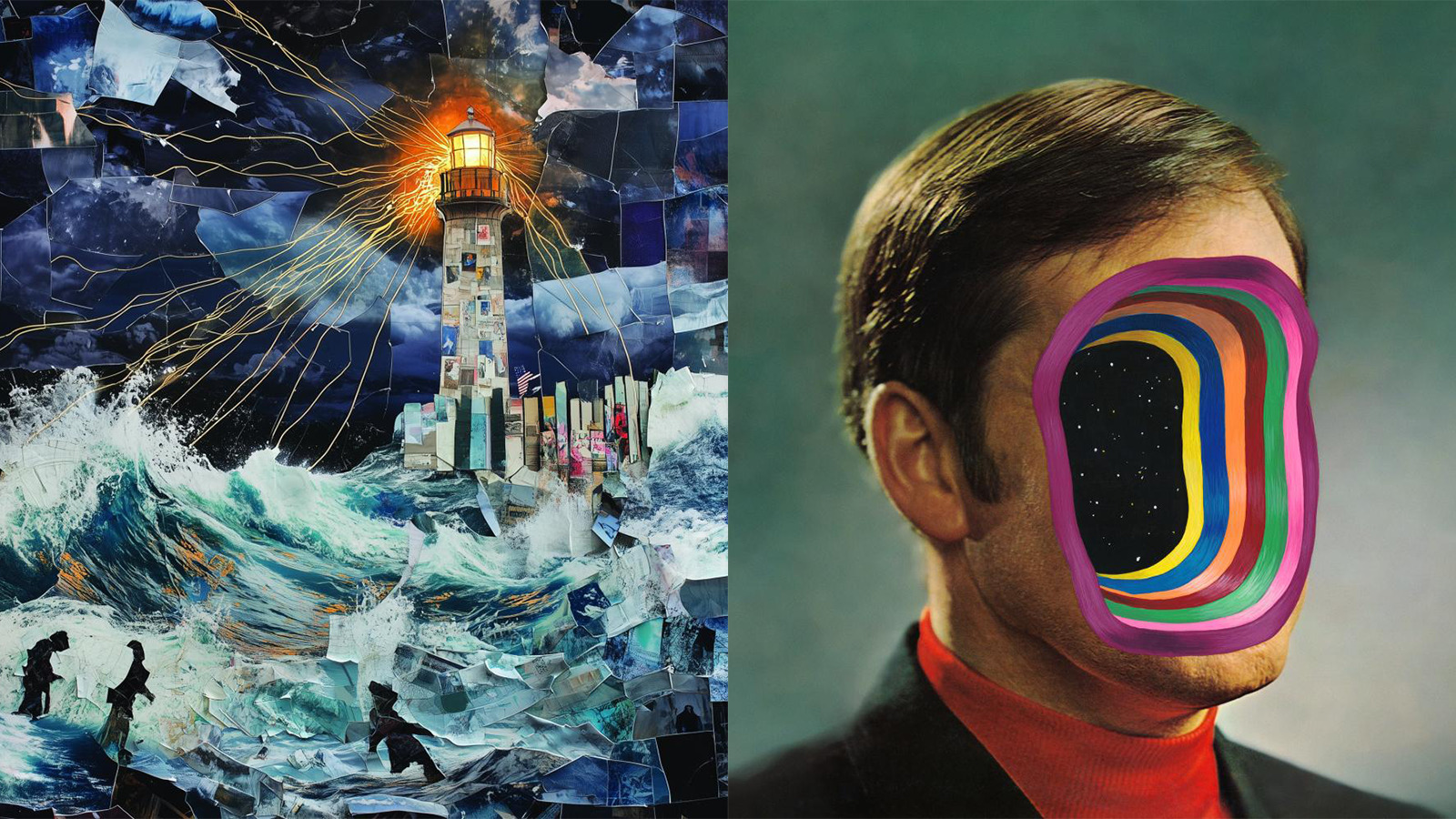Antony Gormley’s sculptures take over Galerie Thaddaeus Ropac in Paris

The visual impact of Antony Gormley’s major new show, 'Second Body', is immediate; from his precise and densely packed arrangement of 60 orthogonal forms to his impenetrable, dimensional grid of steel.
But the British artist suggests that, in occupying all four halls of Thaddaeus Ropac’s gallery in Pantin, he is presenting four discrete assertions of art as 'space activators' — and that the combined effect is far more immersive. 'The distinction between endless space and absolute place; I think this is within all of us,' he told Wallpaper* during a preview. 'It’s that containment of being in the body but being able to see beyond it into infinity.'
Upon entry, visitors are confronted by a massive, peaked sculpture that stands four metres tall, its silhouette conflating house and body. To the immediate left is Expansion Field with its five-dozen Corten steel figures, ranging in mass from 150 kg to a half-tonne; they made their debut in a slightly different arrangement last fall at the Zentrum Paul Klee in Bern, yet Gormley says he had the dimensions of Ropac’s gallery in mind when they were first conceived. 'I’m using a third of the space here,' he explained, noting that the relationship of scale is as 'tight as it can be.'
Beyond Expansion Field, a series of towering cast iron 'stelae' that, despite their stacked cube formation, give a human impression. If visitors appear like children in the presence of what Gormely calls 'unstable vertical columns,' that’s precisely the point. 'By implication, they make you feel smaller and more vulnerable,' he continued. 'And yet here are these things that are curiously like child-like, like lego or blocks.'
To the right of the central hall, the installation titled Matrix II. Over the past three weeks, all 16 intersecting volumes have been constructed in situ. During our visit, craftsmen were still welding the rebar (the same 5 mm-thick metal used in cast concrete buildings), its blackened finish the result of tannic acid. At its centre: an apparent void, just large enough for two people to stand (in theory).
Whereas the experience of Expansion Field is akin to weaving through a maze of gigantic sentinels (a rather brilliant setting for hide-and-go-seek), Matrix II can only be experienced from the periphery. 'There’s nothing to recognise, no reading to be done,' Gormley said of the latter. 'Here is this environment revealed now in its skeletal form. Your body can’t penetrate it but your mind with its eyes can. And it’s a very illusory place—what’s background becomes foreground and vice versa.'
The challenge, he adds, is where and how to direct one’s focus. 'I recognise it’s quite a tall order for the uninitiated perhaps to feel the hermeticism of this when it’s so obviously not something to be read,' said the Turner Prize winner. Nonetheless, Matrix II prompts consideration of the human figure even if it suggests the artist at his least figurative; a cavity to contain two bodies seems impossible to locate amid such a dense and complex framework. As an installation that nearly fills its gallery, it is at once architectural and elemental; maybe it’s a habitat, maybe it depicts some sort of cosmic fabric.
The time-lapse video, meanwhile, captures the realisation of Matrix II three times every five minutes. Gormley, perhaps modestly, believes the final accumulation of images won’t offer much in the way of magic: 'You will just see human spiders at work on a three-dimensional web.'

Watch as Gormley's Matrix II is set up, or as Gormley put it, 'human spiders at work on a three-dimensional web.'

Alongside his impenetrable, dimensional grids of steel, Gormley also has a precise and densely packed arrangement of 60 orthogonal forms on show. Paris Patin

Beyond Expansion Field, a series of towering cast iron 'stelae' give a rather human impression, despite their stacked cube formation. Paris Patin

Gormley's 'unstable vertical columns' are mammoth in scale to make visitors appear like children, making them feel small and vulnerable. Paris Patin
ADDRESS
Galerie Thaddaeus Ropac, 69, avenue Général Leclerc, Paris Pantin 93500
Receive our daily digest of inspiration, escapism and design stories from around the world direct to your inbox.
-
 The new Tudor Ranger watches master perfectly executed simplicity
The new Tudor Ranger watches master perfectly executed simplicityThe Tudor Ranger watches look back to the 1960s for a clean and legible design
-
 This late-night hangout brings back 1970s glam to LA’s Sunset Boulevard
This late-night hangout brings back 1970s glam to LA’s Sunset BoulevardGalerie On Sunset is primed for strong drinks, shared plates, live music, and long nights
-
 How Memphis developed from an informal gathering of restless creatives into one of design's most influential movements
How Memphis developed from an informal gathering of restless creatives into one of design's most influential movementsEverything you want to know about Memphis Design, from its history to its leading figures to the pieces to know (and buy)
-
 Rolf Sachs’ largest exhibition to date, ‘Be-rühren’, is a playful study of touch
Rolf Sachs’ largest exhibition to date, ‘Be-rühren’, is a playful study of touchA collection of over 150 of Rolf Sachs’ works speaks to his preoccupation with transforming everyday objects to create art that is sensory – both emotionally and physically
-
 Architect Erin Besler is reframing the American tradition of barn raising
Architect Erin Besler is reframing the American tradition of barn raisingAt Art Omi sculpture and architecture park, NY, Besler turns barn raising into an inclusive project that challenges conventional notions of architecture
-
 What is recycling good for, asks Mika Rottenberg at Hauser & Wirth Menorca
What is recycling good for, asks Mika Rottenberg at Hauser & Wirth MenorcaUS-based artist Mika Rottenberg rethinks the possibilities of rubbish in a colourful exhibition, spanning films, drawings and eerily anthropomorphic lamps
-
 San Francisco’s controversial monument, the Vaillancourt Fountain, could be facing demolition
San Francisco’s controversial monument, the Vaillancourt Fountain, could be facing demolitionThe brutalist fountain is conspicuously absent from renders showing a redeveloped Embarcadero Plaza and people are unhappy about it, including the structure’s 95-year-old designer
-
 See the fruits of Niki de Saint Phalle and Jean Tinguely's creative and romantic union at Hauser & Wirth Somerset
See the fruits of Niki de Saint Phalle and Jean Tinguely's creative and romantic union at Hauser & Wirth SomersetAn intimate exhibition at Hauser & Wirth Somerset explores three decades of a creative partnership
-
 Technology, art and sculptures of fog: LUMA Arles kicks off the 2025/26 season
Technology, art and sculptures of fog: LUMA Arles kicks off the 2025/26 seasonThree different exhibitions at LUMA Arles, in France, delve into history in a celebration of all mediums; Amy Serafin went to explore
-
 Inside Yinka Shonibare's first major show in Africa
Inside Yinka Shonibare's first major show in AfricaBritish-Nigerian artist Yinka Shonibare is showing 15 years of work, from quilts to sculptures, at Fondation H in Madagascar
-
 The charity record sale with a difference, Secret 7”, is back
The charity record sale with a difference, Secret 7”, is backThe initiative sees 700 vinyls in one-of-a-kind record sleeves designed by world-class artists exhibited and auctioned to raise money for charity